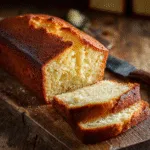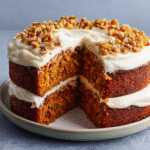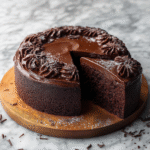If you’ve ever craved a homemade cake but dreaded the thought of piles of dirty dishes, the One-Bowl Pound Cake is your new best friend. This easy, time-saving dessert delivers everything you love about a classic pound cake — rich butter flavor, tender crumb, and a golden crust — without the fuss of multiple mixing bowls or complicated steps. With just a single bowl, simple ingredients, and a few minutes of hand-mixing, you’ll have a loaf that feels both nostalgic and modern.
Unlike many traditional pound cake recipes that call for separate steps of creaming butter, sifting flour, and beating eggs in stages, the one-bowl method keeps things streamlined. That means minimal cleanup, maximum flavor, and an approachable recipe perfect for both beginners and seasoned bakers. Whether you’re whipping it up for an afternoon coffee break, a family gathering, or a make-ahead treat to freeze, this cake is proof that baking doesn’t have to be complicated to be delicious.
And the best part? With endless variations like lemon pound cake, chocolate pound cake, or even cream cheese pound cake, this simple base recipe transforms easily into countless flavor combinations.
What Is One-Bowl Pound Cake?
A Modern Take on a Classic
The One-Bowl Pound Cake is a simplified version of the traditional pound cake, a dessert that dates back to 18th-century Europe. Classic pound cakes earned their name from the formula: one pound each of butter, sugar, eggs, and flour. While rich and delicious, this method often required several steps — creaming butter and sugar separately, beating in eggs one at a time, and carefully folding in flour.
The one-bowl method, on the other hand, keeps things easy and approachable. Instead of multiple mixing stages, everything is combined in a single bowl, either with a whisk, spatula, or stand mixer. The result? A moist, tender cake that tastes just as indulgent as the original, but with far less effort and cleanup.
Why Bakers Love the One-Bowl Method
What makes this cake stand out isn’t just its simplicity — it’s how well it fits into today’s busy kitchens. The one-bowl method appeals to beginners who may feel intimidated by traditional techniques, while experienced bakers appreciate how quickly it comes together. With fewer dishes to wash, you save time without sacrificing flavor or texture.
It’s also incredibly versatile. Once you master the base recipe, you can experiment with flavors like vanilla pound cake, lemon pound cake, or chocolate pound cake, all while sticking to the same easy process. This adaptability makes it a go-to dessert for everything from weeknight treats to holiday tables.
If you enjoy this recipe, you might also love our One-Bowl Carrot Cake for another quick and easy dessert idea.
Essential Ingredients for One-Bowl Pound Cake
The Building Blocks of Flavor
Every great one-bowl pound cake begins with a few simple ingredients you likely already have in your pantry.
- Butter: Unsalted butter is the star, giving the cake its rich, creamy flavor. Using room temperature butter ensures it blends smoothly.
- Sugar: Granulated sugar provides sweetness and helps create the golden crust pound cake is known for.
- Eggs: Large eggs add structure and moisture.
- Flour: All-purpose flour works well, but cake flour creates a lighter texture if you prefer.
- Vanilla Extract: This small addition boosts flavor and adds warmth.
These five ingredients form the heart of the recipe, keeping it simple yet reliable.
Smart Substitutions & Variations
The beauty of the one-bowl method is how easily you can adapt it to fit your taste or dietary needs:
- Flour Alternatives: Try cake flour for a softer crumb, or whole wheat pastry flour for a heartier version.
- Flavor Twists: Swap vanilla for almond extract, lemon zest, or orange blossom water to instantly change the flavor profile.
- Additions: Fold in chocolate chips, blueberries, or a swirl of jam for extra flair.
- Dairy Swaps: Replace butter with cream cheese for a tangy, moist cake, or substitute part of the butter with sour cream or Greek yogurt for added richness.
With these substitutions, your one-bowl pound cake can transform into countless variations without adding complexity.
Step-by-Step Method for the Perfect One-Bowl Pound Cake
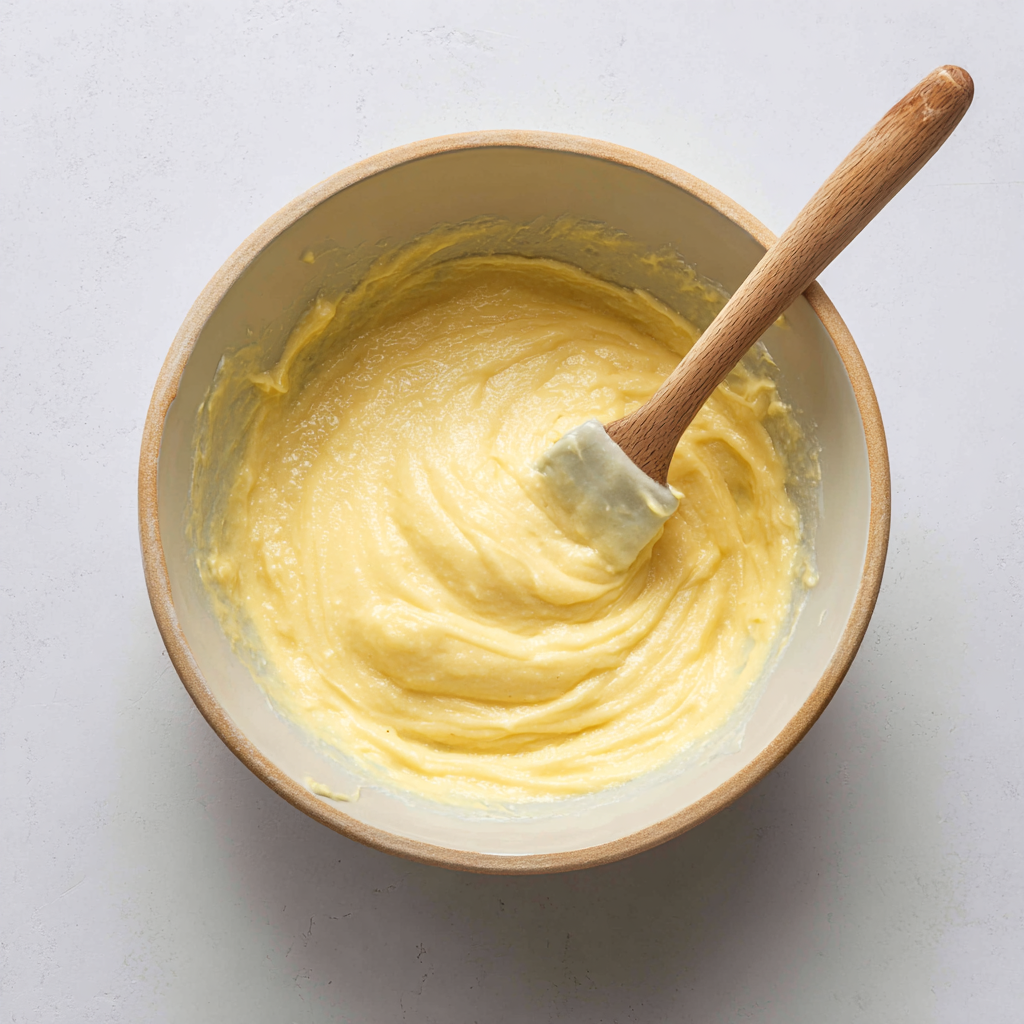
Mixing Everything Together in One Bowl
The best part about this recipe is that it doesn’t demand fancy techniques or multiple mixing bowls. Start by adding softened butter and sugar to a large bowl. Beat them until the mixture looks pale and fluffy — this creates the lightness that keeps your cake from feeling heavy. You can do this with a hand mixer, stand mixer, or even a sturdy whisk if you prefer a more hands-on approach.
Crack in the eggs one at a time, stirring well so they blend smoothly. Mix in the vanilla for warmth and depth. Finally, sprinkle the flour into the bowl and fold it gently until no streaks remain. Be careful not to overmix here — stopping just when the flour disappears keeps your pound cake tender instead of dense.
If you’re feeling creative, this is also the moment to add extras: a dusting of cocoa for chocolate lovers, citrus zest for brightness, or even a handful of berries for a fruity twist.
Baking the Cake to Golden Perfection
Heat your oven to 350°F (175°C) and prepare a loaf pan by greasing it or lining it with parchment paper. Spread the batter evenly in the pan, smoothing out the surface. For an attractive finish, lightly score a line down the center with a knife — this encourages the cake to rise and crack neatly on top.
Bake the cake for 50 to 60 minutes, watching closely as the edges begin to set. You’ll know it’s ready when the top has turned a rich golden brown and a toothpick inserted into the center comes out clean. Let the cake rest in the pan for about 10 minutes before carefully removing it and placing it on a wire rack to cool fully.
With this simple process, you’ll have a moist, flavorful one-bowl pound cake that looks bakery-worthy yet requires minimal effort.
Print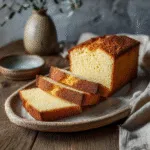
One-Bowl Pound Cake
- Total Time: 1 hour 10 minutes
- Yield: 1 loaf (about 10 slices)
- Diet: Vegetarian
Description
This One-Bowl Pound Cake delivers classic, buttery flavor with a tender crumb—without a sink full of dishes. Everything comes together in a single mixing bowl, making it perfect for busy bakers and weeknight desserts. Serve plain, dusted with powdered sugar, or dressed up with berries and whipped cream.
Ingredients
- 1 cup (226g) unsalted butter, softened
- 1 cup (200g) granulated sugar
- 4 large eggs, at room temperature
- 1 1/2 cups (180g) all-purpose flour
- 1/2 teaspoon baking powder (optional but helpful for lift)
- 1/2 teaspoon fine sea salt
- 2 teaspoons pure vanilla extract
- 2 tablespoons sour cream or whole milk (for extra moisture)
- Softened butter (for greasing) and parchment, as needed
Instructions
- Prep the Pan and Oven: Heat oven to 350°F (175°C). Grease a 9×5-inch loaf pan and line with a parchment sling for easy release.
- Cream Butter and Sugar: In a large bowl, beat softened butter and sugar until pale and fluffy, 2–3 minutes with a hand mixer (or whisk vigorously).
- Add Eggs and Vanilla: Mix in eggs one at a time until fully incorporated, then stir in vanilla. Scrape the bowl as needed.
- Fold in Dry Ingredients: Sift flour, baking powder, and salt right into the bowl. Add sour cream (or milk). Fold gently until no dry streaks remain—avoid overmixing.
- Fill and Bake: Spoon batter into the prepared pan and smooth the top. For a neat split, lightly score a line down the center. Bake 50–60 minutes, until a toothpick in the center comes out clean.
- Cool and Serve: Rest in the pan 10 minutes, then lift out to a rack to cool completely. Dust with powdered sugar or add a simple glaze if you like.
Notes
Use room-temperature butter and eggs for a smooth batter. Measure flour with the spoon-and-level method to avoid a dry cake. If the top browns too quickly, tent loosely with foil for the last 10–15 minutes. The loaf keeps well, wrapped, at room temperature for 3–4 days or can be frozen (well wrapped) for up to 3 months.
- Prep Time: 15 minutes
- Cook Time: 55 minutes
- Category: Dessert
- Method: Baked
- Cuisine: Classic American
Why the One-Bowl Method Works
Time-Saving Simplicity
Traditional pound cakes often require multiple bowls: one for creaming butter and sugar, another for sifting dry ingredients, and sometimes even a third for whipping eggs. While this method creates a beautiful cake, it also creates a mountain of dishes. The one-bowl pound cake skips that step-by-step juggling act. By combining ingredients in a single bowl, you cut prep time in half and make cleanup almost effortless.
This streamlined approach is especially helpful for busy home bakers. Whether you’re whipping up dessert for a family dinner or making a quick snack for unexpected guests, the one-bowl method delivers the same buttery, tender results with less hassle.
Beginner-Friendly Baking
Another reason this recipe has become so popular is that it’s practically foolproof. Many beginner bakers get nervous about “overmixing,” “folding,” or “creaming” properly. The one-bowl method removes much of that stress by keeping the process straightforward and forgiving.
With just a few clear steps — beat, fold, bake — even someone new to baking can create a moist and flavorful pound cake. And because the recipe is adaptable, you can branch out once you’re comfortable. Start with vanilla, then try variations like lemon pound cake, chocolate pound cake, or cream cheese pound cake without having to learn a whole new method.
The result is a recipe that empowers both beginners and experienced bakers: quick, reliable, and endlessly versatile.
Tips & Tricks for Pound Cake Success
Common Mistakes to Avoid
Even though the one-bowl method makes baking easier, there are a few pitfalls to watch for:
- Overmixing the batter: Stirring too long after adding flour can make the cake dense and tough. Mix just until the flour disappears.
- Using cold ingredients: Butter and eggs straight from the fridge don’t blend well. Always bring them to room temperature for a smoother batter.
- Wrong pan size: Using a pan that’s too small may cause the cake to overflow, while a pan that’s too large can leave it dry. A standard 9×5-inch loaf pan is the sweet spot.
- Opening the oven too early: Checking before the cake has set can cause it to collapse. Wait until at least 45 minutes have passed before testing doneness.
Pro Secrets for the Best Texture
Want your one-bowl pound cake to turn out bakery-worthy? Try these expert tips:
- Cream thoroughly at the start: When mixing butter and sugar, whip until the mixture looks pale and airy — this step adds volume and ensures a lighter crumb.
- Add a touch of sour cream or yogurt: Swapping out a couple tablespoons of butter for sour cream makes the cake extra moist without changing the flavor too much.
- Flavor boosters: Vanilla is classic, but a teaspoon of almond extract, lemon zest, or even brown butter can take your cake to the next level.
- Cool properly: Allow the cake to rest in the pan for 10 minutes before moving it to a wire rack. This keeps it from breaking apart while still ensuring a soft interior.
By avoiding common mistakes and applying these pro tips, your easy pound cake recipe will come out tender, flavorful, and picture-perfect every time.
Creative Variations of the One-Bowl Pound Cake
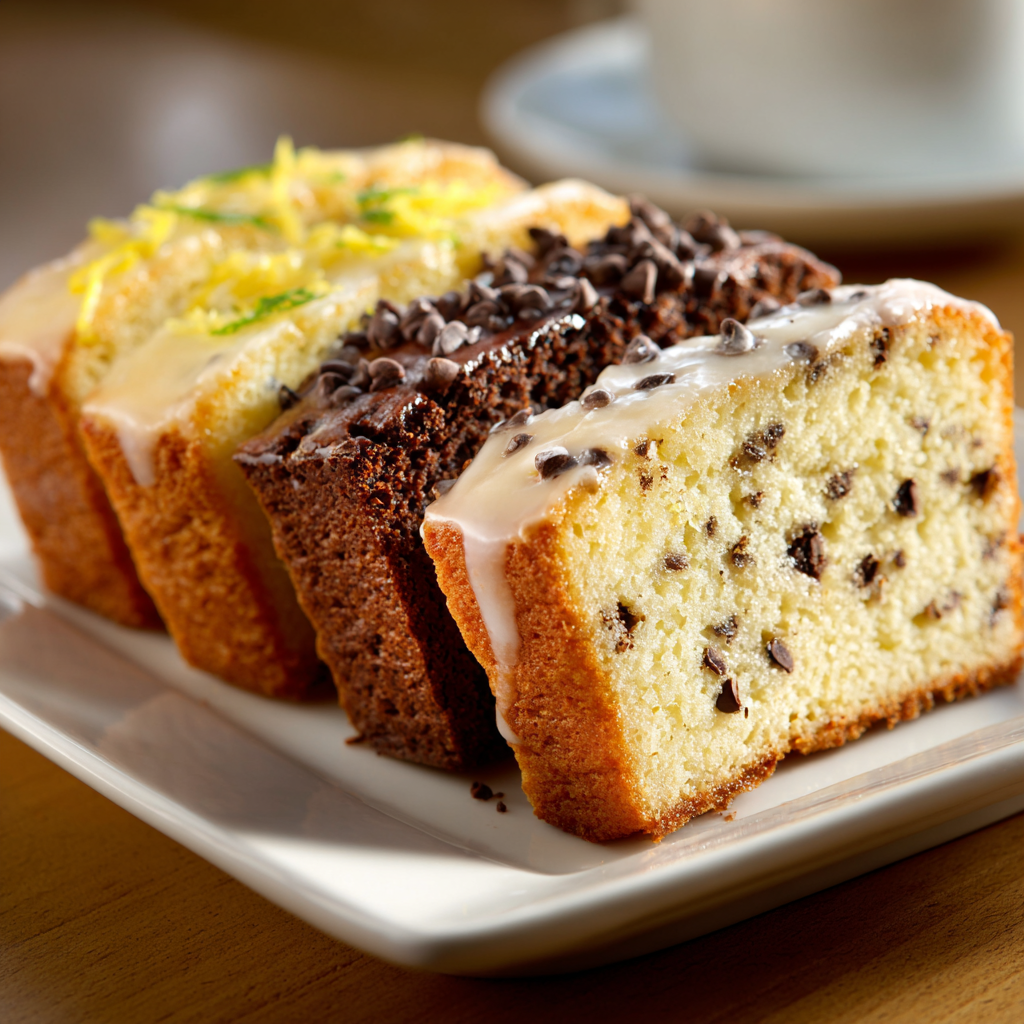
Flavor Twists Worth Trying
The beauty of a one-bowl pound cake is that the base recipe is simple, making it the perfect canvas for flavor experiments. Here are some ideas that bring a fresh spin without adding extra work:
- Bright Citrus: Stir in grated lemon, lime, or orange zest for a refreshing lift. A drizzle of light glaze made with juice and powdered sugar adds even more zing.
- Rich Chocolate: Blend a few spoonfuls of cocoa powder into the flour before mixing, or fold in chocolate chunks for pockets of sweetness.
- Tangy Cream Cheese: Replace a portion of the butter with softened cream cheese. It adds a gentle tang and makes the cake extra moist.
- Warm Vanilla: Use real vanilla bean seeds or paste for deeper flavor and those signature black specks in the crumb.
These twists require no special equipment and keep the process as easy as the original.
Seasonal Variations
Seasonal ingredients are another fun way to customize your pound cake:
- Spring: Fold in blueberries or raspberries for a fruity twist.
- Summer: Try peach or strawberry slices baked into the batter for a fresh, juicy flavor.
- Fall: Add a teaspoon of cinnamon and nutmeg for a cozy spiced cake, or swirl in pumpkin puree.
- Winter: Top with an orange glaze or add cranberries for a festive holiday loaf.
With these seasonal variations, your easy one-bowl pound cake becomes a year-round favorite, adapting effortlessly to any occasion.
Troubleshooting Common Pound Cake Problems
Why a One-Bowl Pound Cake Sometimes Goes Wrong
Even the best one-bowl pound cake recipe can hit a snag if a few simple rules are overlooked. Some common issues include:
- Dry Texture: Often caused by overbaking or using too much flour. Pound cake should be moist and tender, not crumbly.
- Dense or Heavy Loaf: Overmixing the batter can knock out the air needed for a light crumb.
- Cake That Doesn’t Rise Properly: This may happen if the butter wasn’t softened or the eggs were added too quickly.
- Cracked Top: While a slight crack is traditional in a classic pound cake, a deep split may indicate an oven that’s too hot.
Recognizing these issues makes it easier to fix them in future bakes.
How to Fix Pound Cake Mistakes
The good news is that most problems with a one-bowl pound cake have simple solutions:
- For a Dry Cake: Brush slices with a light sugar syrup or glaze to add moisture back. Next time, measure flour with the spoon-and-level method instead of scooping.
- For a Dense Cake: Mix just until the flour is combined. Remember, an easy pound cake recipe doesn’t need heavy beating.
- For a Cake That Didn’t Rise: Always use room temperature butter and eggs, and check that your baking powder is fresh.
- For Cracks on Top: Reduce the oven temperature slightly and bake a little longer to allow the cake to rise more evenly.
By applying these quick fixes, your moist one-bowl pound cake will look and taste just as good as bakery versions, every single time.
Serving & Pairing Ideas for One-Bowl Pound Cake
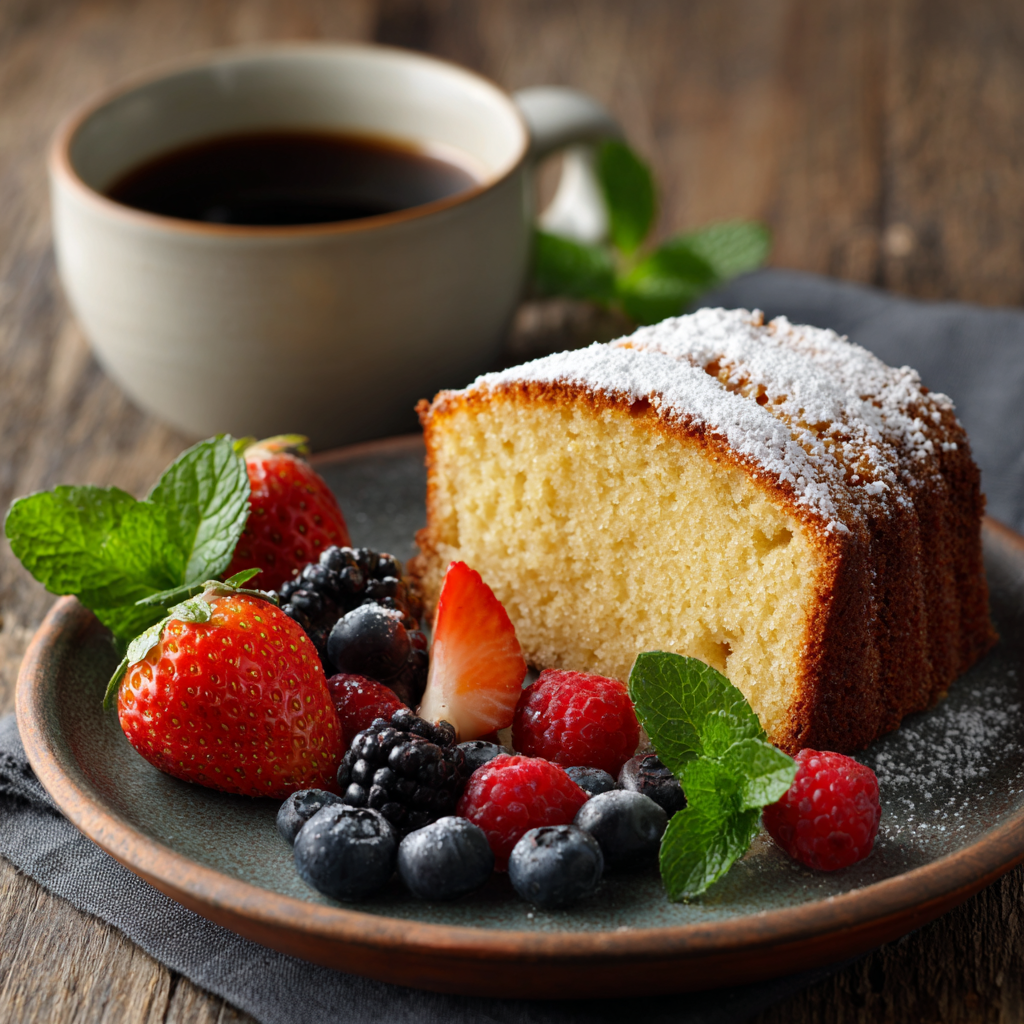
Everyday Occasions
One of the best things about a one-bowl pound cake is how versatile it is. You can enjoy it plain with your morning coffee or slice it up for an after-dinner treat. Because the cake is moist and rich, it doesn’t need frosting — but a dusting of powdered sugar makes it look instantly polished.
For a quick snack, toast a slice and spread on a little butter or jam. The buttery flavor of a classic pound cake pairs beautifully with fruit preserves, honey, or even a spoonful of Nutella. It’s an easy pound cake recipe that feels comforting and homey, no matter the occasion.
Special Presentations
When you want to dress things up, your one-bowl pound cake can be the centerpiece of the table. Try these ideas:
- Fresh Berries & Whipped Cream: A timeless pairing that balances sweetness with freshness.
- Ice Cream Topping: Warm slices of pound cake served with vanilla ice cream make a crowd-pleasing dessert.
- Glazes & Syrups: A lemon glaze, chocolate drizzle, or caramel sauce transforms a simple loaf into something elegant.
- Layered Dessert: Cut the cake into cubes and layer it with pudding, custard, or fruit for an easy trifle.
Because this one-bowl cake recipe is simple yet sturdy, it holds up well to toppings, sauces, and add-ins — making it just as suitable for everyday snacking as it is for holidays or parties.
FAQs
How do I keep my one-bowl pound cake moist?
To keep your pound cake moist, always use room temperature butter and eggs, measure flour accurately, and avoid overbaking. Wrapping the cake tightly once cooled also helps lock in moisture.
Can I freeze a one-bowl pound cake?
Absolutely. A one-bowl cake freezes well for up to 3 months when wrapped in plastic and foil or placed in a freezer bag. Thaw at room temperature or in the refrigerator, then reheat slices gently before serving.
Why did my one-bowl pound cake turn out dense?
A dense one-bowl pound cake usually happens from overmixing the batter or using cold ingredients. Mix only until the flour is just combined, and always start with softened butter and room temperature eggs.
Can I add flavors like lemon or chocolate to a one-bowl pound cake?
Yes, the base recipe is versatile. Adding lemon zest, cocoa powder, or even cream cheese can transform a simple one-bowl pound cake recipe into something unique without changing the method.
Conclusion
At its core, the one-bowl pound cake is proof that baking doesn’t need to be complicated to be rewarding. With nothing more than pantry staples and a single mixing bowl, you can turn out a loaf that’s soft, buttery, and full of homemade charm.
What sets this recipe apart is its flexibility. One day it can be a straightforward classic pound cake for breakfast or afternoon tea, and the next it can transform with lemon zest, cocoa powder, or cream cheese for something new. The method is forgiving, the cleanup is minimal, and the results are consistently satisfying.
If you’ve been searching for a dessert that’s both practical and delicious, this easy one-bowl pound cake recipe deserves a place in your kitchen. It’s a bake you’ll return to again and again — not just because it’s simple, but because it never fails to deliver comfort in every slice.



